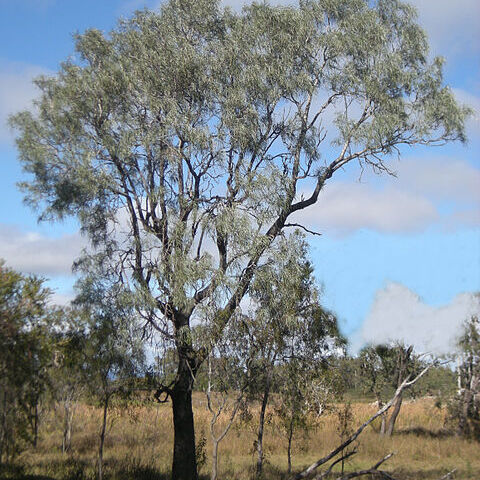A medium sized tree. It grows 5-9 m tall. The leaves are crowded around the stem. They are leathery and like straps. They can be 10-35 cm long by 0.7 cm wide. They are dull green above and silvery underneath. The edges of the leaves curl slightly downwards. The flowers are small and cream. They are about 0.6 cm long. They occur in cylindrical groups at the end of branches. The fruit are oblong and woody. They are 1.5-2 cm long. They contain 2 seeds.


